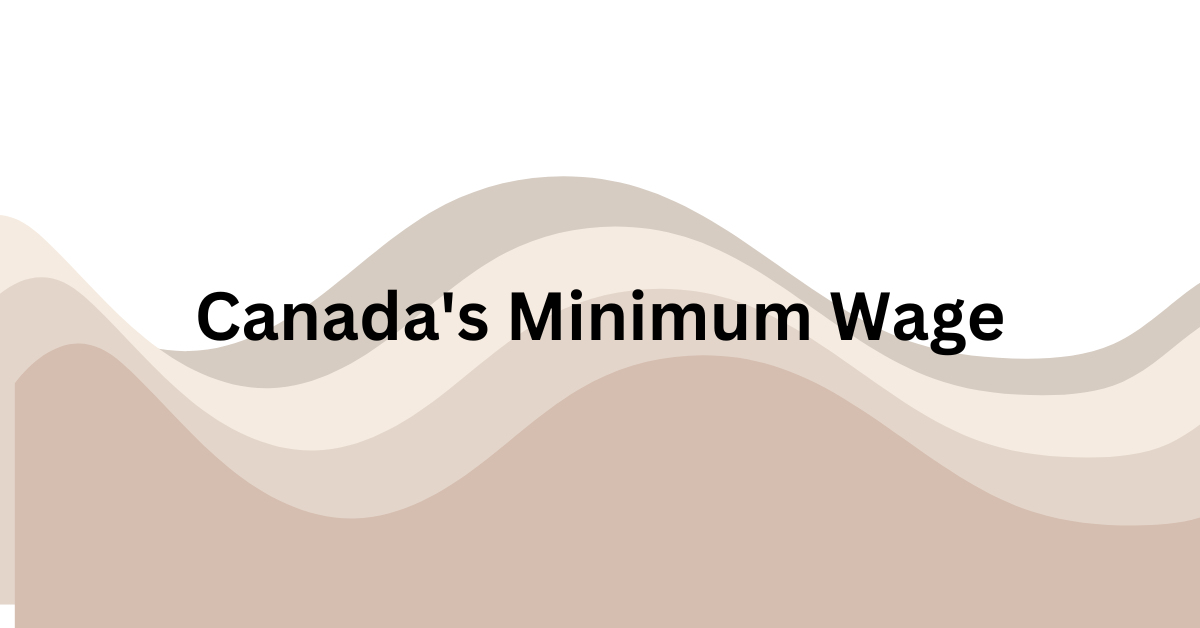Canada’s Minimum Wage: Past and Future Trends
You will learn about the Minimum Wage Increase in this article: What is the background of the proposed increase in the minimum wage in Canada? The Canadian government has established minimum wage rates that employees’ employers are required to pay them. This pertains to all regulated cooperation; industrialists are required to pay their employees a fair wage for their labor and to abide by the rates set by the provinces. Continue reading this article to learn more important details about the Minimum Wage Increase, including what it is and how much it will cost.
Minimum Wage Increase
Every year on April 1st, the Canadian government updates the minimum wage to reflect CPI inflation. In Canada, the minimum wage rate has doubled from the previous year. The job seeker learns about the value of their skill through this.
The bare least that an employer can pay a worker is a minimum wage. The pay scale differs depending on the various provinces and territories. The minimum wage set for employees is owned by the federal government. This pertains to employees in the private sector.
What is the Minimum Wage in Canada?
The minimum wage rate is the bare minimum that an employer is required by law to pay its workers. The federal minimum wage is set at 16.65 per hour in 2023. This rate is flexible; it can be given in excess of the minimum amount but not insufficiently.
The least amount of money that an employer is required to give an employee is the minimum wage. Whether an employee works a full-time or part-time job determines their eligibility. The consumer price index, which measures inflation and establishes the minimum wage that employers must give their workers, is the basis for wage rates in several provinces.
Minimum Wage Rates According to the Province
The federal government determines the wage rates for employers, and the provincial governments also have an influence on the higher wage rates. The following are the wages for 2023:
| Province | Wages (P/Hr) |
| Alberta Minimum Wage | 15 CAD |
| Ontario Minimum Wage | 16.55 CAD |
| British Columbia Minimum Wage | 16.75 CAD |
| Manitoba Minimum Wage | 15.3 CAD |
| Nova Scotia Minimum Wage | 15 CAD |
| Yukon | 16.77 CAD |
| Nunavut | 16 CAD |
| Saskatchewan Minimum Wage | 14 CAD |
| Quebec Minimum Wage | Check Here |
The wage rates for each province are listed in the table above for the year 2023. In this case, the Yukon government pays its workers the highest wage rate—16.77 CAD per hour. BC also offers 16.75 CAD per hour.

Because of their lower prices and rates of inflation than the other provinces, Alberta, Saskatchewan, and Nova Scotia pay their workers less.
What is the History and Future of Canada’s Minimum Wage Increase?
The rate of inflation will determine the minimum wage in the future. With inflation reaching 6.08% in 2022, workers’ lives will become even more precarious. Over 26,000 Canadian workers will benefit from an increase in the minimum wage by being able to live more affordably.
Minimum wage rates were established earlier in the 20th century in an effort to raise workers’ standards of living and lessen poverty. Unchangeable hourly wages are used to pay it. It was fixed at 11 CAD per hour in Canada in 1976, and the following year it reached its highest point at 24 CAD per hour.
Employees are dealing with numerous issues pertaining to their livelihood as a result of inflation. The federal wage rate enables the worker to maintain a higher standard of living and to provide themselves and their families with decent facilities.
Wages will keep rising in line with inflation, and the government will respond by taking measures in proportion to this growth. The person must confirm and be aware of the wage rate in their territory. They are entitled to file a lawsuit against their employer if they receive less money from them than the required amount.
Everyone is subject to the same wage rates, which are applicable to a number of federal industries such as banks, postal services, transportation, and other federal corporations. The overtime rates are deducted from the wages of the employees.
An individual employee makes an average of 4,108 USD per month, or 49,300 USD annually. In their line of work, men can typically make 5% more money than women.